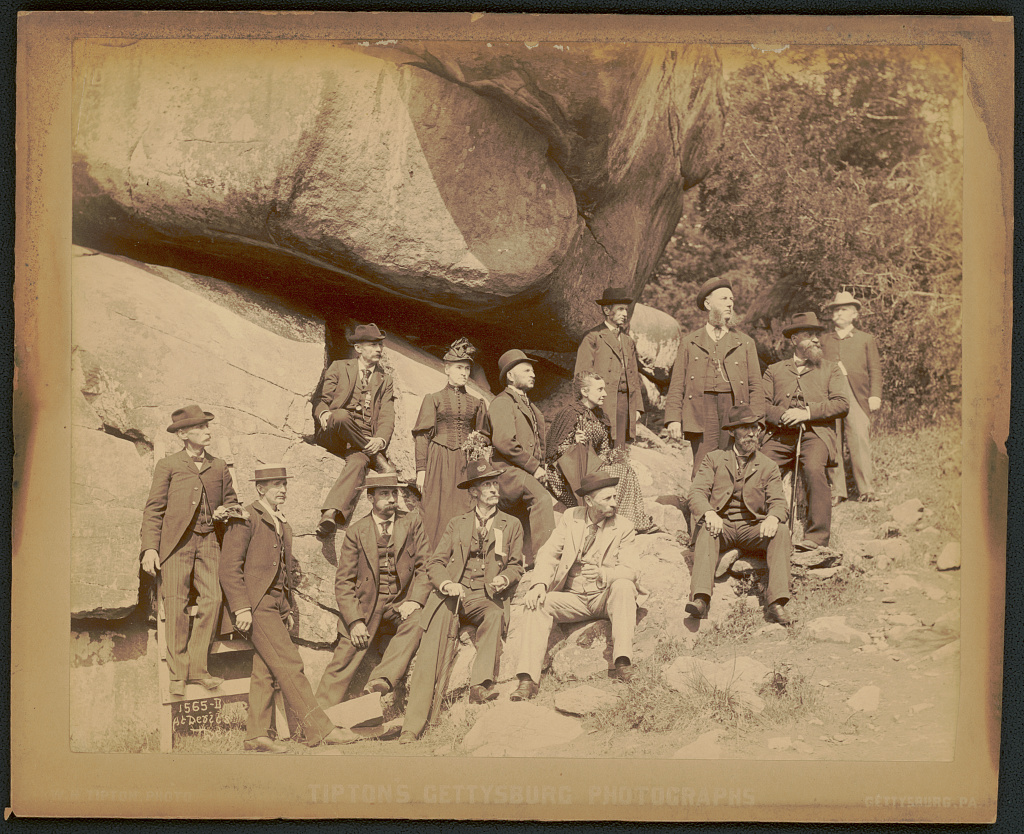
July 2, 2013
The Valley of Death “Battlefield Experience” program on July 2, more than any other event, illustrates the downside of attending sesquicentennial events on the more or less exact time. Oddly enough, some of the difficulties may have made the experience a bit more authentic.
The Lay of The Land
If you spend a little time at Gettysburg, you will find that it is relatively easy to orient yourself, when you are on the high ground. You can start walking in a more or less southerly direction from the vicinity of the “high water mark” past numerous Union monuments of all sizes and descriptions including the cathedral-like Pennsylvania monument.
Looking roughly West, the larger Confederate monuments to Virginia and North Carolina are visible far across the field. Eventually, the paths jog West as you go over or around the Round Tops and you are eventually on West Confederate Avenue going roughly North on Seminary Ridge. Stand by the Virginia or North Carolina monument and look across the upward sloping field divided by a fence and think about jogging across that field with lead raining on you from three directions, mostly from people behind that stone wall, but that is Day 3.
Valley of Death
On Day 2, much of the action was among the woods and rocks in the southern part of the field. It is very easy, at least for me, to get totally disoriented down there. CV and I managed to get to Devil’s Den a bit before the Valley of Death program was starting. This was the one event where numbers overwhelmed the Park Service. Ranger Jim Flook divided us into two groups to take two different routes. My new-found friends from the Gettysburg Geek Group coached us to stick with Ranger Flook to go through Devil’s Den.
The crowd of 500 or so climbed up through a narrow gap between the boulders that a Texas veteran of the battle had described as being as big as meeting houses. The fellow had also thought Little Round Top was very steep. He was obviously somebody from very flat country with small buildings, but to be fair, we did not have to climb Little Round Top under fire from the 20th Maine and green-clad United States Sharpshooters, who must have been nearly invisible to soldiers used to fighting in the open. The Sharpshooters added much to Confederate confusion on that day.
Ranger Flook gave us a good sense of the confusion and intense fighting in that part of the field. He was hampered a bit by sound equipment that was not well scaled to the crowd. This was compounded by one of the few exceptions I noted to the almost universal politeness of sesquicentennial participants of all descriptions. Somebody was standing not very far, certainly not nearly far enough, from Ranger Flook, talking on a cell phone, until someone in the crowd chased him away.
Ranger Flook explained to us the difficulty that historians have in pinpointing the exact sequence of events in this area of the battle, by quizzing the crowd on how well their modern digital watches were synchronized and trying to imagine what it would be like quizzing veterans years after the event. The few of them that had watches had better things to do than look at them and witnessed things much more memorable than noting the time.
Next 6538 Irish Brigade Monument, Gettysburg (Photo credit: lcm1863)[/caption]
6538 Irish Brigade Monument, Gettysburg (Photo credit: lcm1863)[/caption]































































































